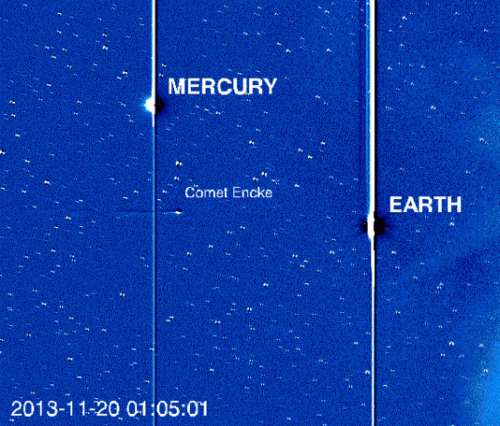Q&A: Comet ISON

(Phys.org) —Don Yeomans, a senior research scientist at JPL, keeps a watchful eye on near-Earth objects—asteroids, comets and other space rocks. Yeomans heads a group charged by NASA to watch for objects whose orbits bring them close to Earth.
Below is a comet ISON Q&A with Don Yeomans, manager of NASA's Near-Earth Object Program Office at the Jet Propulsion Laboratory, Pasadena, Calif.
What is so interesting about comet ISON?
There's great interest in comet ISON for a couple of reasons. First of all, it's coming from the very edge of our solar system so it stills retains the primordial ices from which it formed four-and-a-half billion years ago. It's been traveling from the outer edge of the solar system for about five-and-a-half million years to reach us in the inner solar system, and it's going to make an extremely close approach to the sun and hence could become very bright and possibly a very easy naked-eye object in early December.
What will happen to comet ISON on Thanksgiving?
So there are three possibilities when this comet rounds the sun on Thanksgiving Day 2013 [Nov. 28]. It could be tough enough to survive the passage of the sun and be a fairly bright naked-eye object in the early morning sky in the first week of December. Or, the sun could actually pull it apart. The tidal forces could actually pull this comet apart and so it becomes several chunks rounding the sun and putting on a great show again in early December. Or, if the comet is very weak, it could break up into a cloud of dust and be a complete bust in December.
Do comets like ISON present a scientific opportunity?
There is going to be a small army of amateur and professional astronomers on the Earth, and spacecraft are going to be observing this object near the sun. So we're going to find out a great deal about what this comet is made of, and hence we are going to find out a great deal about what the solar system was like four-and-a-half billion years ago.
More information: To learn more about comet ISON, go to www.nasa.gov/ison
Provided by NASA





















